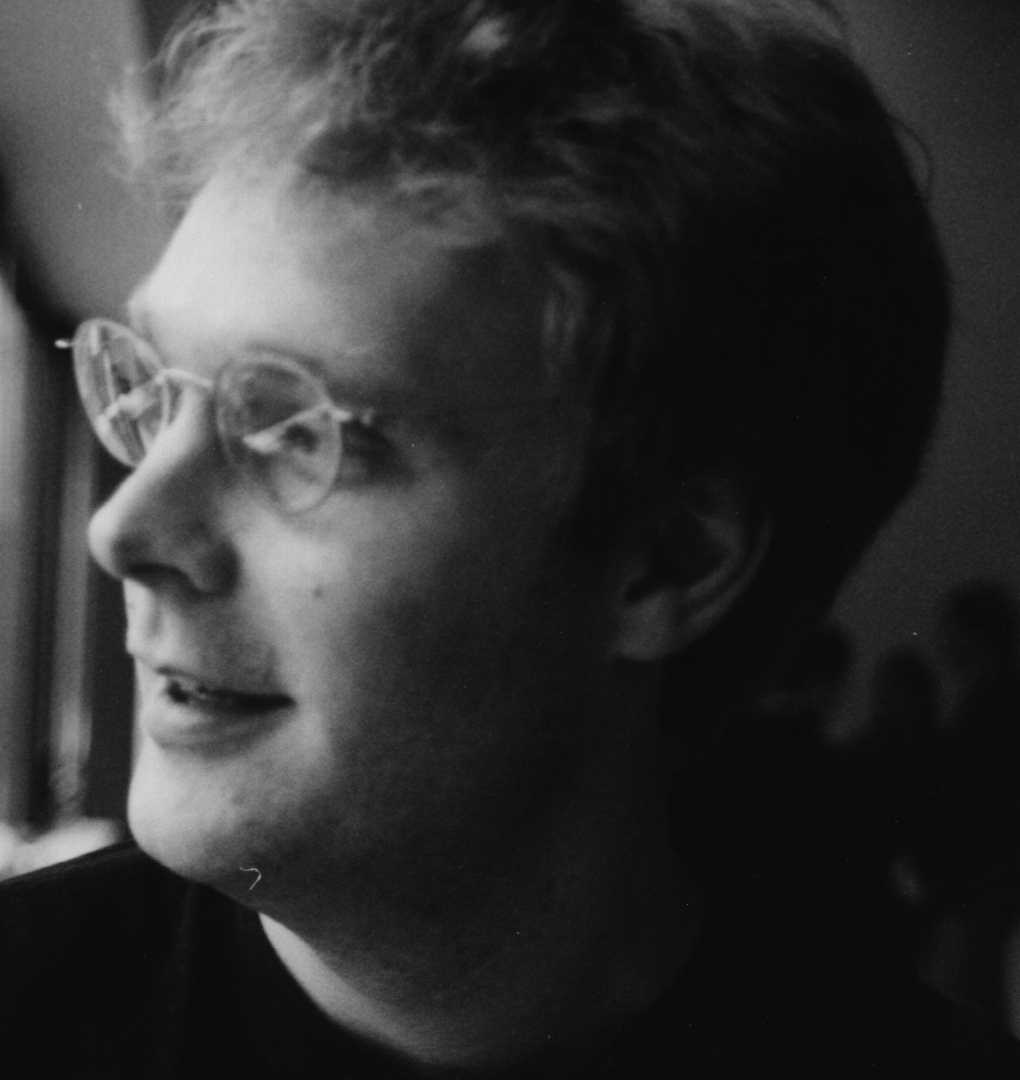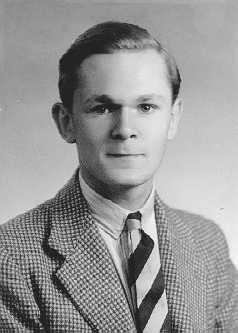|
Quartet Concert |
Brave New Works |
Quartet Concert
4
February 9, 2002
Program
Tom Schnauber (b. 1969)
Finds for String Quartet
Air
Gem
Relic

Maria Sampen, violin
Steve Miahky, violin
Tim Christie, viola
Andrea Yun, cello
Humphrey Searle (1915-1982)

Two Practical Cats for speaker, flute/piccolo, guitar, cello
Macavity : The Mystery Cat
Growltiger's Last Stand
-poems by T. S. Eliot
For Narrator, flute , cello and guitar
Jennifer Goltz, Narrator
Emily Perryman, flute
Katri Ervamaa, cello
Matthew Ardizzone, guitar
Oliver Messien (1908-1992)
Quartet for the End of Time
Liturgy of crystal
Vocalise, for the Angel who announces the end of Time
Abyss of the birds
Interlude
Praise to the Eternity of Jesus
Dance of fury, for the seven
A mingling of rainbows for the Angel who announces the end of
Praise to the Immortality of Jesus
Alejandra Urrutia, violin
Deborah Chodacki, clarinet
Katri Ervamaa, cello
Winston Choi, piano
Notes on Tom
Schnauber's
AIR.
A musicologist is hiking alone in the woods. In the rustling of the trees,
he hears an old tune carried on the wind from far away. He listens for a while,
then decides to find out where it's coming from. But suddenly the tune is gone,
and he is left with only the wind.
GEM.
The musicologist climbs higher. At some point, he finds a dense, colorful
rock on the ground. Suspecting that there might be something of value in the
rock, he starts chipping away at it. Sure enough, he finds a perfectly tuned
major third.
RELIC.
Now high in the cold mountains, the musicologist stumbles into a small
ice-cave. Brushing the snow from his clothes, he looks around. Embedded in one
of the walls of the cave is a waltz, a bit distorted, but still recognizable. He
could free it and take it back with him, but why? He leaves it where it is.
Bio
Composer Tom Schnauber was born in Los Angeles in 1969. He completed his bachelor
of music in composition and an advanced studies degree in scoring for motion
pictures at the University of Southern California. On a scholarship from the
German government, he then went to Berlin to study ethnomusicology as well as to
continue his studies in composition. After his return to the US a year later, he
did a small stint in Hollywood scoring films no one will ever see. He is
currently a Ph.D. candidate in composition and theory at the University of
Michigan where he also earned a master of music in composition. His major
teachers have included Donald Crockett, Stephen Hartke, Paul-Heinz Dittrich,
William Albright, Michael Daugherty, Bright Sheng, Evan Chambers, and William Bolcom.
Schnauber's music has been performed throughout the United States and
Europe. He has received commissions for orchestral, chamber, and vocal works from
ensembles such as Brave New Works, the Dexter String Quartet, and the Falls Church
Chamber Orchestra. In addition, his music has been performed by the University of
Michigan Symphony Orchestra, the University of Michigan Men's Glee Club, the
University of Illinois Symphony Orchestra, Exindigo, Prime Directive, and the
Charleston Symphony Orchestra. He has also written music for stage productions by
Toledo University, Coe College, and Ann Arbor's Wild Swan Theater. He is
currently an adjunct faculty member in composition and theory at St. Olaf College
in Northfield, MN.
Notes on Humphrey
Searle’s Two Practical Cats:
English twelve-tone and serialist composer Humphrey Searle was active from the
Second World War onward. A distinguished writer and teacher, Searle also cataloged
the music of Franz Liszt and studied
briefly with Anton von Webern. The formalism of twelve-tone and serialist musical
construction (more of the Schoenberg school than his teacher's) was Searle's dominant
musical aesthetic, but an obsession with the purity of the tone-row was never his
musical style. Like Liszt, Searle was a great
compromiser, always willing—and able—to fuse techniques to achieve the desired musical
effect. In essence, he was a “romantic serialist.”
Searle also fascinated by cats and unusual instrumental ensembles, and his “Two Practical
Cats," written in the early 1950s, takes both of these delights in true form.
Written for narrator, flute, cello and guitar, “Two Practical Cats” is a “distinctly
un-Lloyd Webberian setting” of TS Eliot's “Macavity: The Mystery Cat” and “Growltiger's
Last Stand.” (Both poems appear in a little book by Eliot called Old Possum's
Book Of Practical Cats, which was later made into the popular Broadway play Cats
by Andrew Lloyd Webber. Even though scholars have turned their noses up at Old
Possum's Book of Practical Cats, it cannot be denied that, not only did T.S.
Eliot love cats, he was able to express their nature on paper with an incredibly
unique and imaginative flair.)
Works with a spoken text actually formed a unusually large part of Searle's repertoire.
In some respects, this use of spoken word reflected the challenges involved in
Searle's preference for contemporary musical techniques, and the text often
forms an anchor around which Searle's musical experimentation could develop.
Notes on Olivier
Messiaen’s Quartet for the End of Time:
In 1940, Olivier Messiaen (1908-92) was interned in a German prison camp, where
he discovered among his fellow prisoners a clarinetist, a violinist and a violoncellist.
The success of a short trio which he wrote for them led him to add seven more movements
to this Interlude, and a piano to the ensemble, to create the Quartet for the End
of Time. Messiaen and his friends first performed it for their 5000 fellow prisoners
on January 15, 1941.
If the plain facts of the work's origins are simple, the spiritual facts are far
more complex. Messiaen's religious mysticism found a point of departure for the Quartet
in the passage in the Book of Revelation
(chapter 10) about the descent of the seventh angel, at the sound of whose trumpet
the mystery of God will be consummated, and who announces "that there should
be time no longer."
According to the composer, the Quartet was intended not to be a commentary on the
Apocalypse, nor to refer to his own captivity, but to be a kind of musical extension
of the Biblical account, and of the concept of the end of Time as the end of past
and future and the beginning of eternity. For Messiaen there was also a musical sense
to the angel's announcement. His development of a varied and flexible rhythmic system,
based in part on ancient Hindu rhythms, came to fruition in the Quartet, where more
or less literally Messiaen put an end to the equally measured "time" of
western classical music.
The architecture of the Quartet is both musical and mystical. There are eight movements
because God rested on the seventh day after creation, a day which extended into the
eighth day of timeless eternity. There are intricate thematic relationships, as for
example between movements two and seven, both of which are about the angel; and stylistic
and theological relationships, as between movements five and eight.
In a preface to the score, Messiaen commented on each of the movements:
Liturgy of crystal.
Between three and four o'clock in the morning, the awakening of the birds: a blackbird
or a solo nightingale improvises, surrounded by efflorescent sound, by a halo of
trills lost high in the trees...
Vocalise, for the Angel who announces the end of
Time.
The first and third parts (very short) evoke the power of this mighty angel, a rainbow
upon his head and clothed with a cloud, who sets one foot on the sea and one foot
on the earth. In the middle section are the impalpable harmonies of heaven. In the
piano, sweet cascades of blue-orange chords, enclosing in their distant chimes the
almost plainchant song of the violin and violoncello.
Abyss of the birds.
Clarinet alone. The abyss is Time with its sadness, its weariness. The birds are
the opposite to Time; they are our desire for light, for stars, for rainbows, and
for jubilant songs.
Interlude.
Scherzo, of a more individual character than the other movements, but linked to them
nevertheless by certain melodic recollections.
Praise to the Eternity of Jesus.
Jesus is considered here as the Word. A broad phrase, infinitely slow, on the violoncello,
magnifies with love and reverence the eternity of the Word, powerful and gentle,
... "In the beginning was the Word, and Word was with God, and the Word was
God."
Dance of fury, for the seven trumpets.
Rhythmically, the most characteristic piece in the series. The four instruments in
unison take on the aspect of gongs and trumpets (the first six trumpets of the Apocalypse
were followed by various catastrophes, the trumpet of the seventh angel announced
the consummation of the mystery of God). Use of added [rhythmic] values, rhythms
augmented or diminished... Music of stone, of formidable, sonorous granite...
A mingling of rainbows for the Angel who announces the end of Time.
Certain passages from the second movement recur here. The powerful angel appears,
above all the rainbow that covers him... In my dreams I hear and see a catalogue
of chords and melodies, familiar colors and forms... The swords of fire, these outpourings
of blue-orange lava, these turbulent stars...
Praise to the Immortality of Jesus.
Expansive solo violin, counterpart to the violoncello solo of the fifth movement.
Why this second encomium? It addresses more specifically the second aspect of Jesus,
Jesus the Man, the Word made flesh... Its slow ascent toward the most extreme point
of tension is the ascension of man toward his God, of the child of God toward his
Father, of the being made divine toward Paradise.
IF YOU WOULD LIKE TO BE UPDATED ABOUT THIS CONCERT
EMAIL: cyoungk@umich.edu
